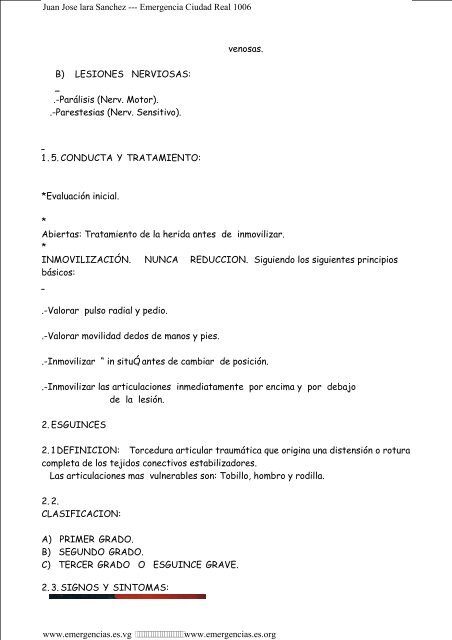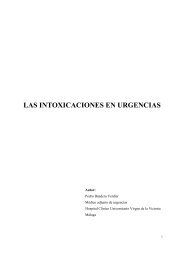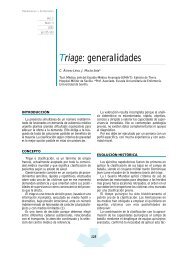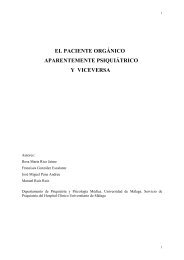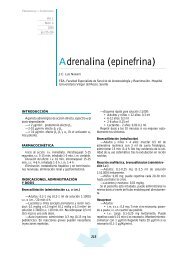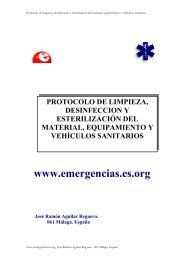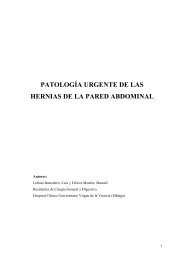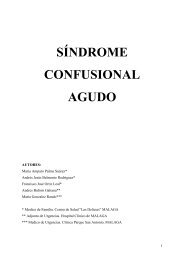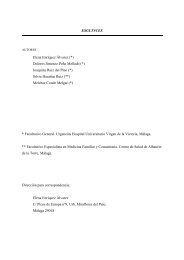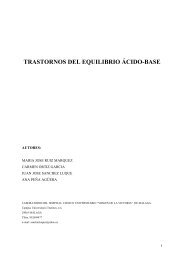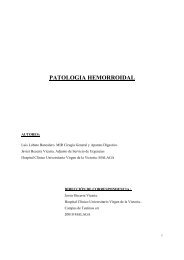INMOVILIZACIÓN Y TRASLADO DE LESIONADOS. Introducción ...
INMOVILIZACIÓN Y TRASLADO DE LESIONADOS. Introducción ...
INMOVILIZACIÓN Y TRASLADO DE LESIONADOS. Introducción ...
You also want an ePaper? Increase the reach of your titles
YUMPU automatically turns print PDFs into web optimized ePapers that Google loves.
Juan Jose lara Sanchez --- Emergencia Ciudad Real 1006<br />
B) LESIONES NERVIOSAS:<br />
.-Parálisis (Nerv. Motor).<br />
.-Parestesias (Nerv. Sensitivo).<br />
1 . 5. CONDUCTA Y TRATAMIENTO:<br />
*Evaluación inicial.<br />
venosas.<br />
*<br />
Abiertas: Tratamiento de la herida antes de inmovilizar.<br />
*<br />
<strong>INMOVILIZACIÓN</strong>. NUNCA REDUCCION. Siguiendo los siguientes principios<br />
básicos:<br />
.-Valorar pulso radial y pedio.<br />
.-Valorar movilidad dedos de manos y pies.<br />
.-Inmovilizar “ in situ”, antes de cambiar de posición.<br />
.-Inmovilizar las articulaciones inmediatamente por encima y por debajo<br />
de la lesión.<br />
2. ESGUINCES<br />
2. 1 <strong>DE</strong>FINICION: Torcedura articular traumática que origina una distensión o rotura<br />
completa de los tejidos conectivos estabilizadores.<br />
Las articulaciones mas vulnerables son: Tobillo, hombro y rodilla.<br />
2. 2.<br />
CLASIFICACION:<br />
A) PRIMER GRADO.<br />
B) SEGUNDO GRADO.<br />
C) TERCER GRADO O ESGUINCE GRAVE.<br />
2. 3. SIGNOS Y SINTOMAS:<br />
www.emergencias.es.vg www.emergencias.es.org


